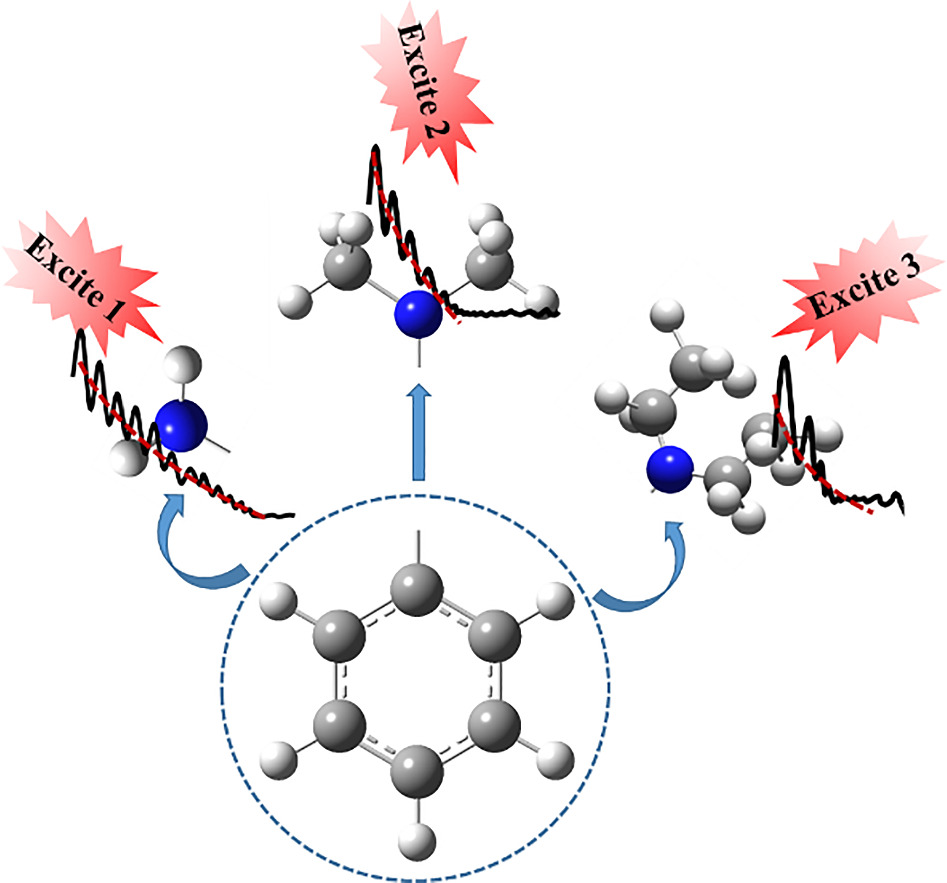https://doi.org/10.1140/epjd/s10053-024-00830-w
Regular Article - Ultraintense and Ultrashort Laser Fields
Studying substituent number effects on vibrational energy transfer by time−resolved CARS spectroscopy
1
School of Physics and New Energy, Xuzhou University of Technology, 221018, Xuzhou, China
2
School of Electrical and Control Engineering, Xuzhou University of Technology, 221018, Xuzhou, China
3
Department of Physics, Harbin Institute of Technology, 150001, Harbin, China
4
National Key Laboratory of Shock Wave and Detonation Physics, Institute of Fluid Physics, China Academy of Engineering Physics, Mianyang, China
Received:
23
December
2023
Accepted:
19
March
2024
Published online:
8
April
2024
Vibrational energy transfer was a key property of chemical reactions that remains deeply understood. In this work, the detail information of vibrational energy transfer in aniline, N,N-dimethylaniline (DMA) and N,N-diethylaniline (DEA) were studied by femtosecond time-resolved coherent anti-Stokes Raman scattering (CARS) spectroscopy, respectively. Low frequency modes of aniline, DMA and DEA were collectively excited, the beats arising from vibrational couplings among these modes were described. With analysis of vibrational coupling, energy transfer flow from one mode to another was visualized. An investigation into the molecular structure and vibrational couplings can be found that vibrational energy transfer is related to vibrational mode symmetry. In addition, substituent groups play an important role in vibrational coupling and energy transfer of aniline, DMA and DEA. A decrease of the number of substituent vibrational modes involved in coupling and energy transfer efficiency with the increase of the amount of relative molecular mass ratio was found out.
Supplementary Information The online version contains supplementary material available at https://doi.org/10.1140/epjd/s10053-024-00830-w.
Copyright comment Springer Nature or its licensor (e.g. a society or other partner) holds exclusive rights to this article under a publishing agreement with the author(s) or other rightsholder(s); author self-archiving of the accepted manuscript version of this article is solely governed by the terms of such publishing agreement and applicable law.
© The Author(s), under exclusive licence to EDP Sciences, SIF and Springer-Verlag GmbH Germany, part of Springer Nature 2024. Springer Nature or its licensor (e.g. a society or other partner) holds exclusive rights to this article under a publishing agreement with the author(s) or other rightsholder(s); author self-archiving of the accepted manuscript version of this article is solely governed by the terms of such publishing agreement and applicable law.





